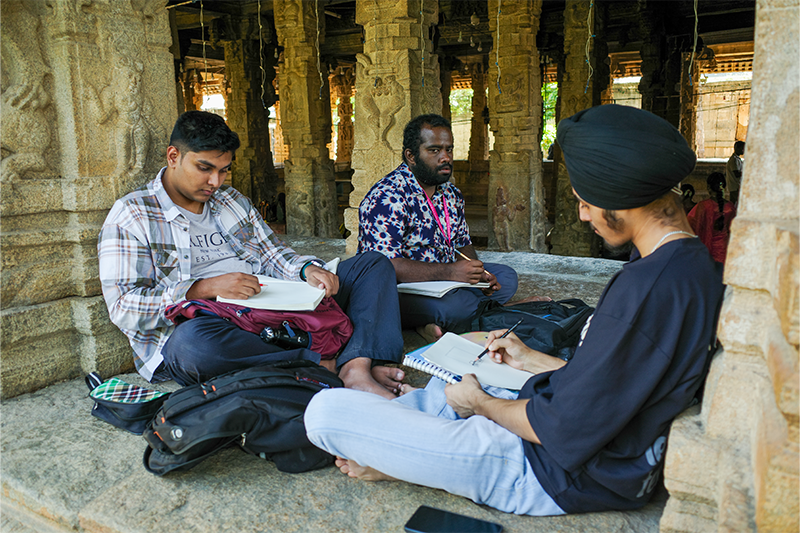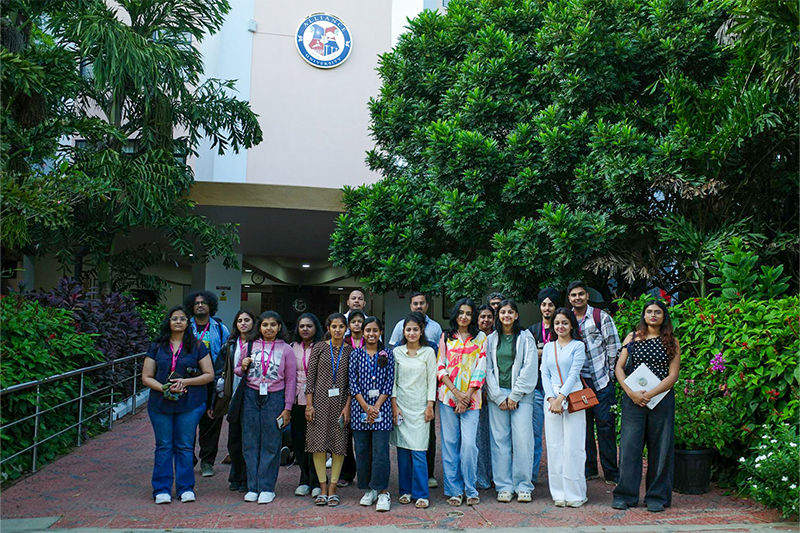Media






Alliance University Organises One-Day Academic Excursion to Kolar
The Department of Fine Arts and the Department of Language and Literature at the Alliance School of Liberal Arts organised a one-day academic excursion to Kolar. The visit aimed to offer students an opportunity to explore the region’s cultural, historical and artistic heritage, and to experience first-hand the architectural and linguistic traditions associated with Karnataka’s ancient temples.
Purpose and Educational Significance
The primary objective of the excursion was to extend learning beyond classroom walls and immerse students in the artistic and cultural legacy of the Chola Dynasty and the Vijayanagar Empire. The Kolaramma Temple and the Someshwara Temple, both significant monuments, formed the core of the visit. The Kolaramma Temple, built during the Chola period and later enhanced by the Vijayanagar rulers, provided insights into early granite architecture, temple iconography and sculptural traditions. For Fine Arts students, the intricate carvings and stylistic features offered valuable material for analysis. Students of language and literature examined Kannada and Sanskrit inscriptions, which revealed aspects of the linguistic and cultural environment of the era.
Itinerary and Activities
The day began with a briefing session to familiarise students with the historical background of Kolar’s temples. Guided by faculty members, the students visited the Kolaramma Temple where they closely observed the architectural structure, inscriptions and iconography. The exploration continued at the Someshwara Temple, an example of Dravidian architectural style characterised by carved pillars, open courtyards and detailed sculptures. Students observed how mythology, artistic expression and architectural design are woven into the temple layout.
Throughout the excursion, students engaged in activities such as analysing carvings that depicted narrative and floral motifs, discussing socio-cultural contexts linked to the Chola and Vijayanagar periods, and studying inscriptions related to temple history and craftsmanship. Many students also sketched architectural elements and photographed their observations as part of their learning process.
Educational Benefits
The academic excursion helped students connect theoretical knowledge with lived cultural experience. By integrating aspects of art, language, culture and history, the visit enabled them to appreciate the architectural achievements of various dynasties, understand narrative storytelling through sculpture and gain awareness of historical documentation practices. The interdisciplinary nature of the visit strengthened their understanding of Karnataka’s heritage and enhanced their engagement with classroom learning.
Conclusion
The excursion to Kolar provided students with meaningful exposure to cultural and architectural traditions, reinforcing the value of experiential learning. The feedback from participants reflected the educational impact of the visit and its success in deepening their understanding of regional heritage. The initiative also highlighted the commitment of Alliance University to promoting holistic and application-oriented learning experiences.
